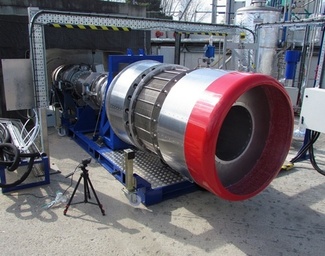
The company CEO Alan Bond announced the break-through recently, which brings the reality of a reusable single-stage-to-orbit (SSTO) launcher closer. The company has promoted the Skylon launcher over many years as a viable solution to this long-term problem, and the dual-cycle SABRE engines are a critical component in the system design. The concept achieves its SSTO capability by operating the engines in ‘jet mode’ in the lower atmosphere, when, critically, they run on atmospheric oxygen. Beyond about 20 km altitude, at a Mach number of about 5, the engines transition to ‘rocket mode’ operation, when oxygen stored on-board is used.
The main issue with the design has always been how to cool the high temperature flow of air into the engine intakes. Assessing the feasibility of an innovative pre-cooler design was the aim of the recent test programme. The ground tests, that were carried out under the watchful eye of ESA propulsion experts, demonstrated that the air flow could be cooled to -150 C in just 1/100th of a second, over a period of 10 minutes. Normally, frost would be expected to cripple the engine operation, but therein lies the novel aspect of the pre-cooler design.
Validation of the testing of this important enabling technology by the European Space Agency lends weight to SABRE engine concept as a viable dual-cycle engine in the quest to achieve the ‘holy grail’ of SSTO capability.
Reaction Engines require £250 million to take the project to the next stage. Could this be the beginning of a new era of aircraft and launcher propulsion?
 RSS Feed
RSS Feed
